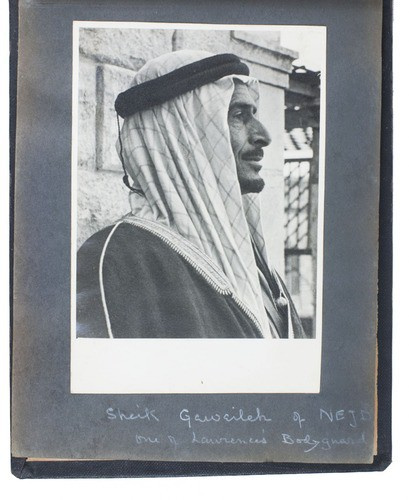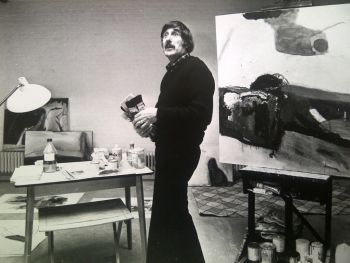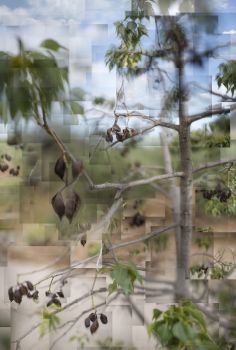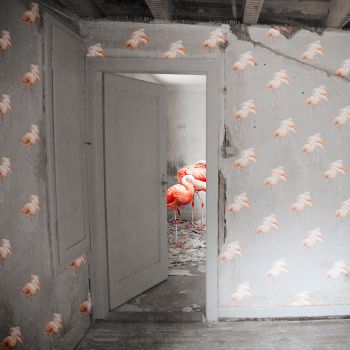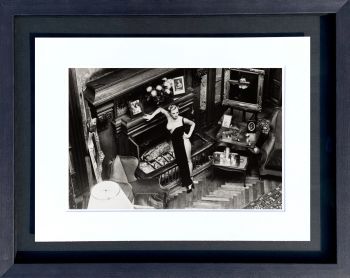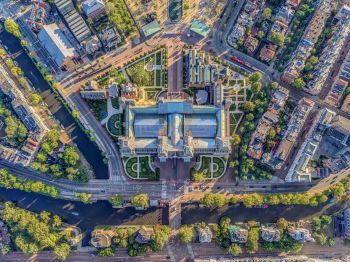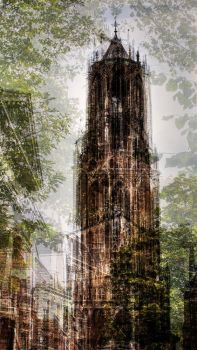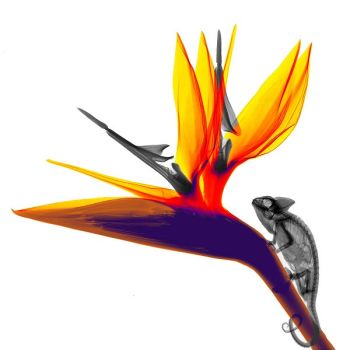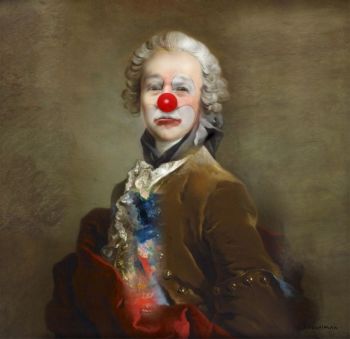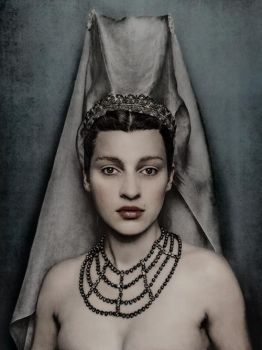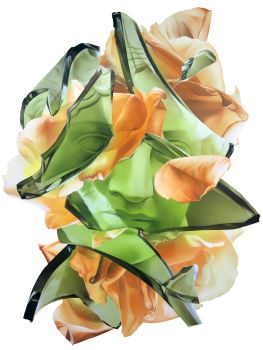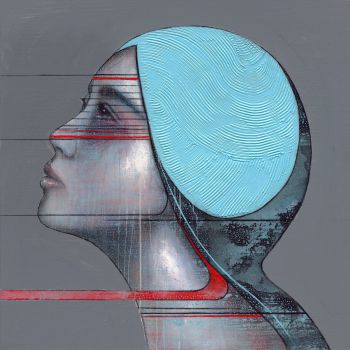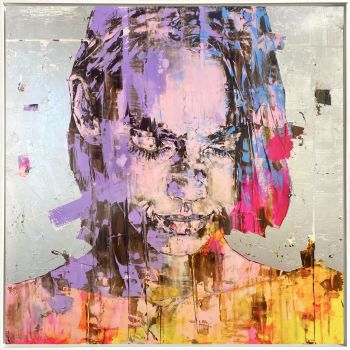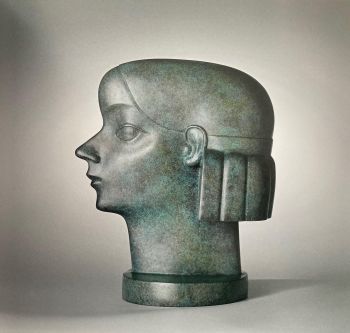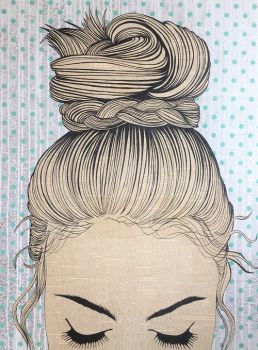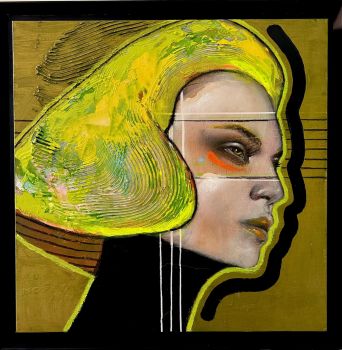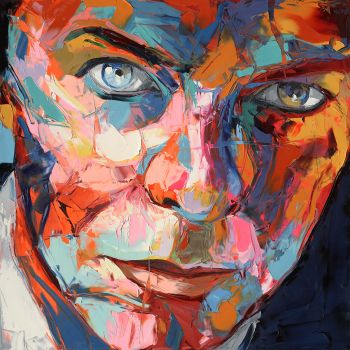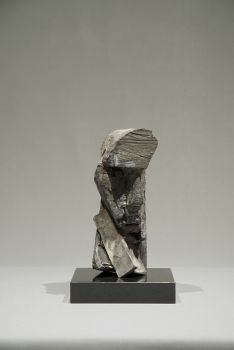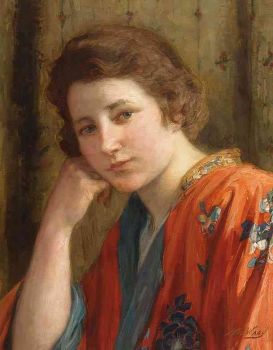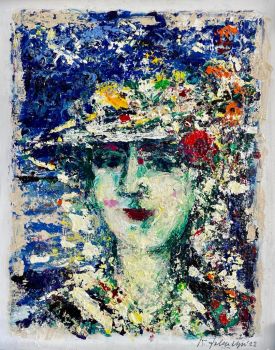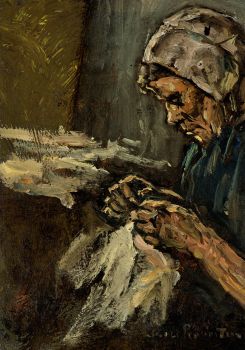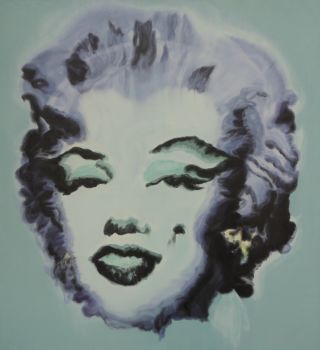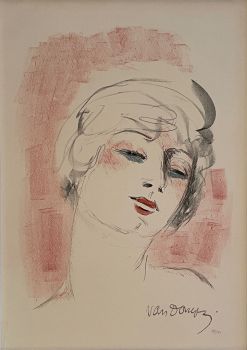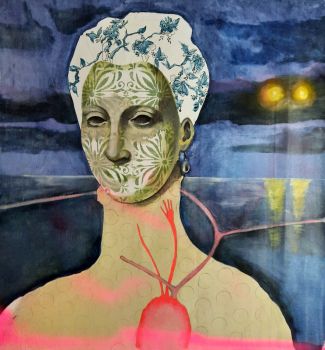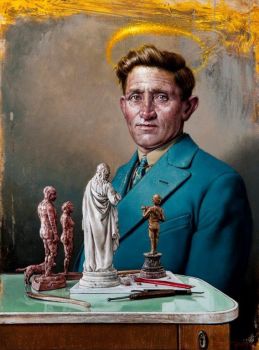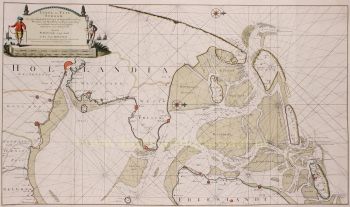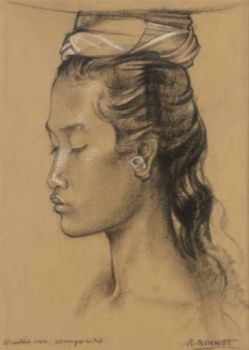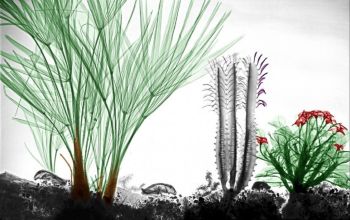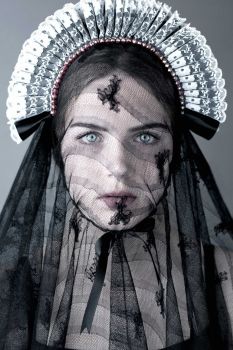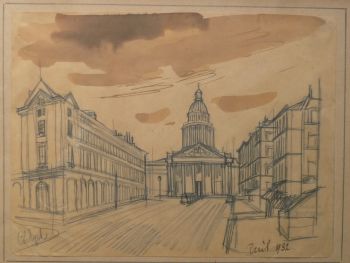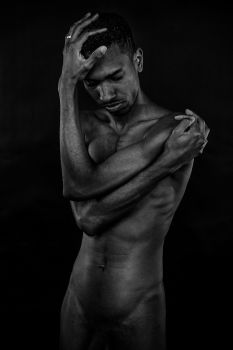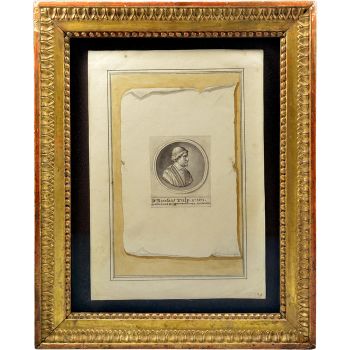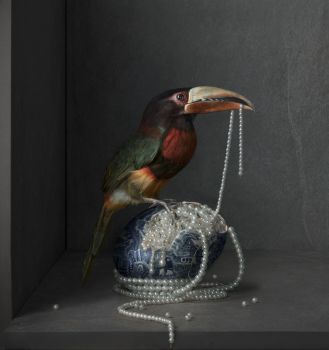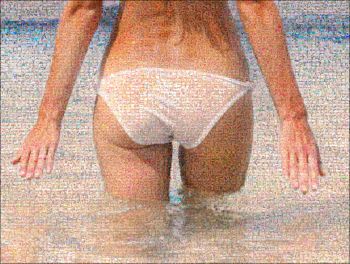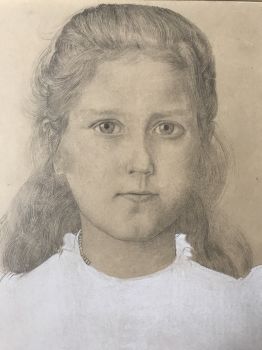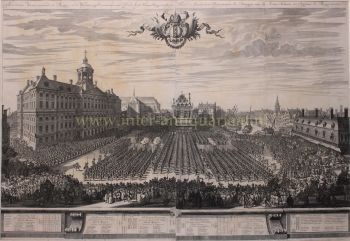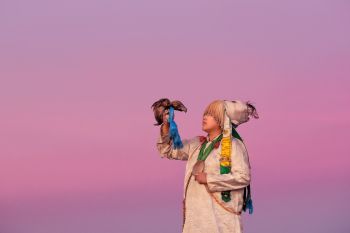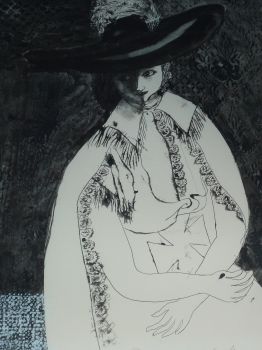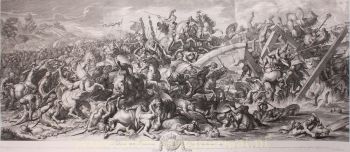14 photographic portraits of sheiks & tribesmen, by Lawrence of Arabia's Chief of Staff 1920
Walter Francis Stirling
PaperPhotographic print
17 ⨯ 12 cm
Currently unavailable via Gallerease
- About the artworkArab Types.
Syria, [ca. 1918-ca. 1921]. Oblong album (18 x 26 cm). An album containing 14 black and white photographic portraits (mostly about 17 x 12 cm) plus a smaller print of one. Mounted in a ca. 1930 album of black paper leaves (boards covered with black cloth).
Fascinating collection of 14 photographic portraits showing 13 sheikhs and tribesmen from several tribes in and around Syria, all with captions that usually give the subject's name and tribe. The photos, often highly expressive profile studies, were taken and assembled by Lt. Col. Walter Francis Stirling (1880-1958), T. E. Lawrence's Chief of Staff in 1918. The named tribes are the Shammar (nomadic Bedouins in northern Arabia, Syria and Iraq), Ruwalla (semi-nomadic Bedouins led by the Sha'lan family, also in northern Arabia and Syria), Hadidiyin (nomadic Bedouin sheep herders in Syria and northern Iraq), Walda (Kurds in Syria), Yazidis (Kurds in northern Iraq), Agaidat (Beduoins in Syria) and "Abu Klamin"[?] (not identified). The best known subjects are Fawaz al Sha'lam, Emir of Ruwalla (grandson of Nuri Sha'lan (1847-1842!), who commanded a large portion of the troops that entered Damascus with Faisal in 1918) and Daham al-Hadi, Sheikh of the Shammar. The latter is described as "Paramount Sheikh"of the Shammar (in Iraq), a title granted him by the British in 1920 that he lost when Faisal became King of Iraq in 1921.
One photograph slightly damaged, mostly outside the image area, but further in very good condition, with only an occasional small surface scratch or spot. Rare photographic portraits of sheiks and tribesmen in T.E. Lawrence's Damascus circle of friends and enemies. - About the artistWalter Francis Stirling (1880-1958) was an army officer, born in Southsea on 31 January 1880. He was the only son and younger child of Captain Francis Stirling RN and his wife, Mary Caroline. He served at the relief of Ladysmith, in the action at Laing's Nek and the operations in the Orange River Colony and the Transvaal in the Boer War. In 1906 he was seconded to the Egyptian Army and spent five years with an Arab battalion on the Eritrean and Abyssinian borders. In the First World War he served at Gallipoli in Egypt and the Palestinian campaign until he was appointed Chief Officer to Lawrence. In 1919 he was adviser to Emir Feisal and Deputy Political Oddicer in Cairo, then acting governor of Sinai and Governor of the Jaffa district in Palestine. In 1923 he became adviser to King Zog I. He collaborated with Alexander Korda on an film called Seven Pillars of Wisdom. In the Second World War he served in Damascus becoming the correspondent for The Times. He survived an assassination attempt in 1949.
Artwork details
Category
Subject
Material & Technique
Colour
Related artworks
- 1 - 4 / 24
- 1 - 4 / 24
- 1 - 4 / 24

